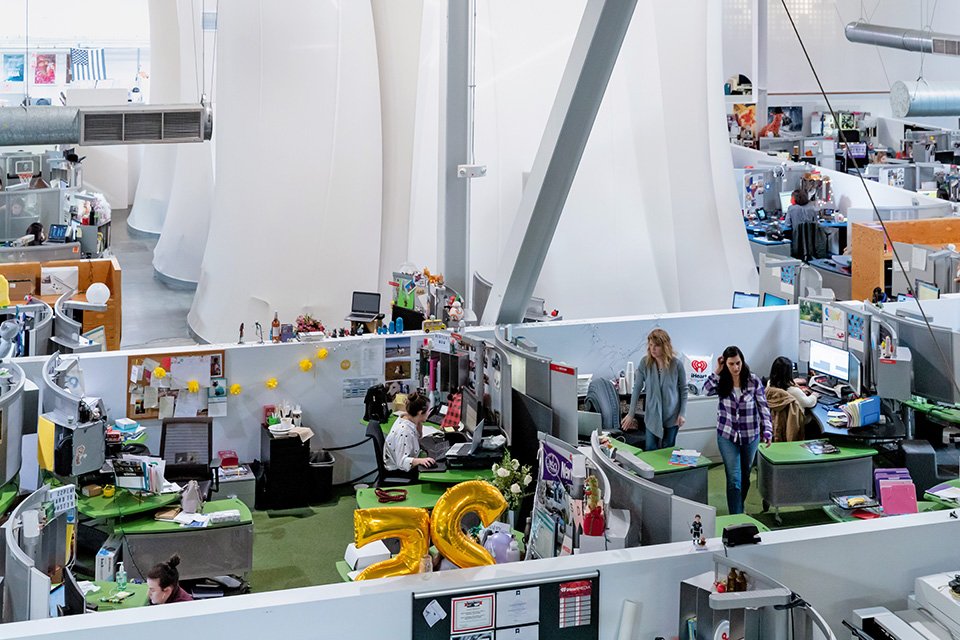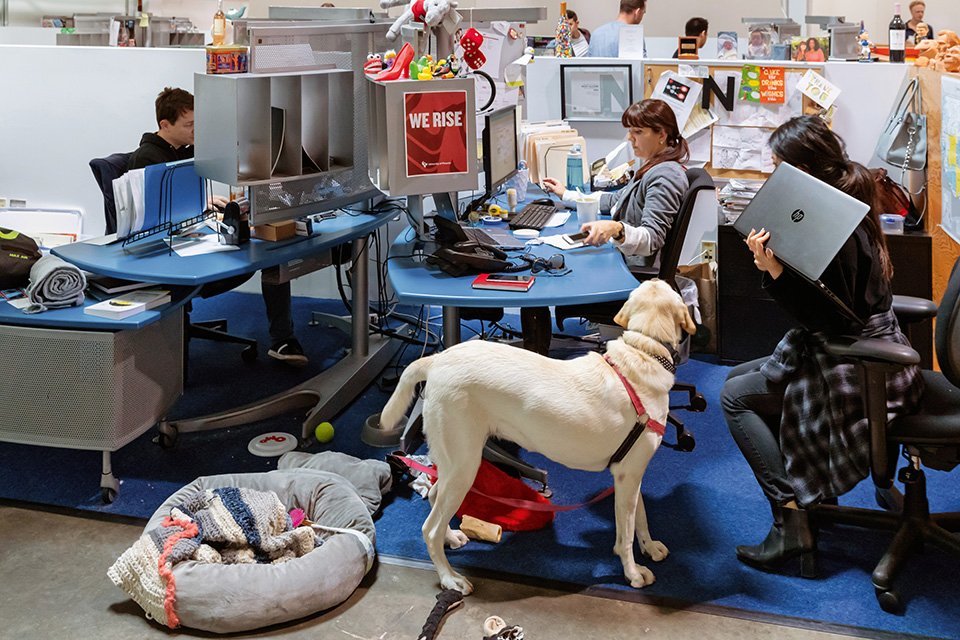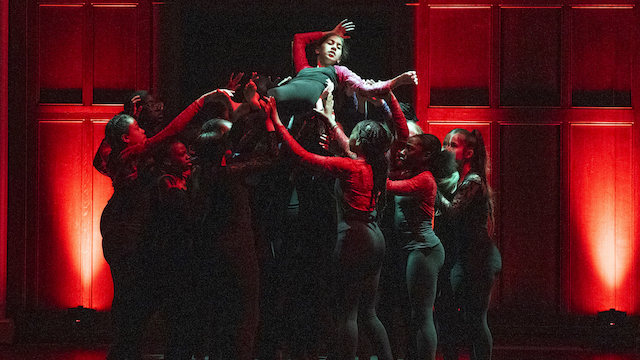Last month, I was working at an exploitative summer job, earning less than minimum wage, and doing over 70 hours a week. My team had just gone on strike when I was invited by Dance Gazette to write an article about what makes a happy organisation. It was a euphoric moment for me. I couldn’t believe someone cared about my opinions on happiness at work when my own job was making me so miserable.
As adults, most of us spend a vast chunk of our waking hours working, commuting, or getting ready for work. A recent poll commissioned by the Association of Accounting Technicians estimates that the average worker in the UK will spend 84,171 hours working over the course of their career. So, when we ask what makes a happy organisation, really, we are asking what makes a happy life.
‘How do we make sure that somebody working in a country a long way away still feels connected to the RAD?’
– Tim Arthur
These thoughts are especially relevant to the RAD because Tim Arthur, the new chief executive, sent out two surveys – one each to RAD teachers and members – to get a ‘temperature check,’ as he puts it, for how people feel about the RAD. ‘I wanted it to be warts and all,’ he explains. ‘I really wanted to hear where are the frustrations, what are the bits that we’re not doing that we could do better – or that people would like us to change.’ For the past couple of years, Arthur has been training to become a psychotherapist, and going to therapy himself as part of the course. It has influenced his approach to life – ‘I’m much more chilled out,’ he beams, recalling how he used to work ‘huge hours, and not necessarily productively.’ He is mindful of the ‘trauma of the last couple of years’ for RAD members, bearing in mind the toll covid-19 has taken on people’s mental health, and is keen to do what he can to support them through the global cost of living crisis.
But the RAD can’t solve the world’s problems and Arthur is all too aware of the challenges of running a global organisation; ‘how do you make sure that somebody who is a sole operator in a country somewhere quite a long way away still feels connected?’ he asks. It is a concern for him, and much thought went into what he calls the ‘health and happiness’ surveys. The team are still working through the responses, and Arthur estimates it will be about 18 months before members begin to feel any meaningful change. But he wants to learn from these surveys and make them an annual occurrence.

To gain an understanding of what a happy company looks like, I spoke to Magnus Falk, Chief Information Officer of Zoom, a virtual meeting software with which many of us have become familiar since the start of the pandemic. For the past three years, Zoom has topped rankings of companies with the happiest employees, so I asked Falk what makes their workers so happy. ‘You need a very clear purpose of your role within the organisation,’ he tells me.
‘There’s that great story of the janitor who worked at NASA, and when asked what his role was, he said, “I’m helping put someone on the moon.”’ It’s a sweet joke, but he means it. ‘I think people are only happy if someone in the organisation cares what they’re doing,’ he muses. ‘If no one cares about you, you can really get unhappy very quickly.’
‘People are only happy if someone in the organisation cares what they’re doing’
– Magnus Falk
According to Falk, happiness is the core principle upon which Zoom was established. The founder, Eric Yuan, left a six-figure salary tech job because he was unhappy, and felt that his customers were not happy either. He set up Zoom to make people happy. According to Falk, Yuan is a ‘servant leader’: his meetings are based on listening and asking colleagues for their input, and he cares about their feedback.
It seems then, that Arthur is doing the right thing with the RAD – he calls this his ‘listening phase.’ But he feels the weight of responsibility. ‘If people don’t see change happen, then that’s almost worse,’ he worries.
To try to understand what positive change looks like in the workplace, I spoke to an expert. Laura Giurge is Assistant Professor in Behavioural Science at the London School of Economics.
Her research focuses on the culture of work in a holistic way and asks what we can do to improve our lives both at work and outside of it.
Interestingly, in contrast to Falk, Giurge doesn’t think a sense of purpose is necessarily a priority. ‘I don’t think that any one element is the most important,’ she reflects, ‘priorities can depend on the person. Where they are in their career, what type of organisation they’re working for, there’s all these contextual factors.’ Perhaps there is no clear-cut answer, but all three of my interviewees agree that happiness at work is linked to people – Giurge cites the saying, ‘people don’t leave organisations, they leave their boss’ and that this is backed by the research: ‘the people we work with, in particular our direct managers, have a really big influence on how happy we are at work.’

Falk and Giurge also have different views on flexible working. ‘Flexibility is a kind of modern construct,’ Falk considers. ‘Post pandemic, you have all the flexibility of where, when and how you work, which is really good.’ Giurge’s research, however, shows that although it is convenient to have a job which works around your life, flexibility isn’t always a good thing. ‘There’s a lot of over-positive buzz around flexibility,’ she laments. ‘There’s so much diversity of preferences and work types nowadays, and there’s less structure.’
According to Giurge, it is important that we impose structure and boundaries in our work and communicate those with our colleagues. She stresses that small changes can make a big difference – for example, if we send non-urgent emails outside of work hours, we should make it clear to the recipient that we do not expect them to answer right away. ‘I can say that I tend to respond fast, or that I’m not available between x and y. Trying to enforce those norms can go a long way.’

For many in the creative industries, work does not mean a simple 9-5 job, and since the start of the pandemic, dance has taken a hit. But interestingly, Giurge points out that for dancers and dance teachers, ‘it’s beneficial that you can only do your work in certain locations – a studio imposes a certain structure.
Once you leave that physical location, you could disconnect from work and really engage in life outside.’ Whilst this may be true, the work of a dance practitioner is much more than just what we do in the studio – there might be admin, planning, marketing or a whole host of other things that demand our attention outside the studio.
‘The people we work with have a really big influence on how happy we are at work’
– Laura Giurge


But it’s not only the culture of workplaces that is important to our happiness. Arthur tells me that dancing can put us in what psychotherapists call a ‘flow state.’ He defines this as ‘a state that people get in when they’re transported by an activity. So, if you are playing piano, or you’re knitting, or you’re dancing, your brain goes into a certain state, where you almost become unaware of time and space, and you’re just in the moment – very present.’ From a mental health perspective, he says, flow states have been shown to be hugely beneficial and have a long-term impact. To my surprise, he tells me that doctors now prescribe activities like dance classes or gardening to help with mental health issues like depression and anxiety. They call it ‘social prescribing – a method of helping people with their physical and mental health outside of medical interventions.’
Many different things contribute to creating happy organisations – people need to feel listened to and cared for, as well as being able to separate work from life. But, crucially for RAD members, it seems that one of the most important things is to do something that puts you in the moment, that makes you feel present and that brings you joy. And if doctors are prescribing dance, it suggests what RAD members have always known –that it must be one of the greatest sources of happiness.
Health & happiness survey
Members are at the heart of the Royal Academy of Dance. So the health of the RAD as an organisation rests on our members’ happiness – on how satisfied and supported they feel. We also know that in an ever-changing world we cannot take our members’ loyalty for granted. Just over 10% of the global membership responded, 13.7% of teachers worldwide, and we are thankful for their openness and honesty and for their ideas. With a new CEO at the helm, we have been listening intently and what we have heard from the respondents is this that we must:
1. improve our responsiveness, listen more and act on feedback
2. provide more choice, whether choosing exam sessions, CPD and more
3. offer a wider range of financial support options for teachers and their students
4. create new dance syllabi – with contemporary, musical theatre, modern and tap coming out on top
5. create relevant products to attract more students from diverse backgrounds
6. offer support, guidance and resources on mental health and wellbeing both for teachers’ own self-care and to better support their students
7. create themed and branded lesson plans and widen our offering
8. improve our digital offer: from music downloads to an RAD app and a more compact and intuitive website
An action plan will be shared with the October edition of the member’s via e-news.
WATCH
Eric Yuan, the founder of Zoom, on what makes a happy customer experience
Ella Satin is a freelance performing arts critic. Their specialism is theatre, but she also writes about dance, comedy, film and music.
Ana Latese is an editorial and narrative illustrator based in North Carolina. analatese.com



















